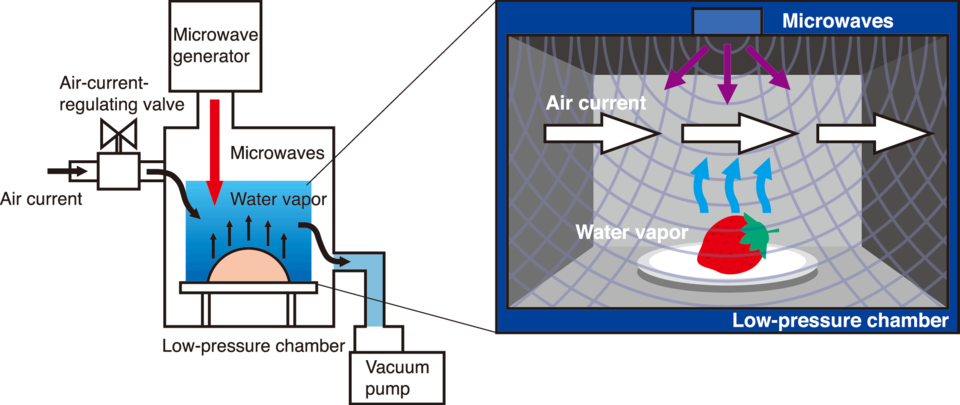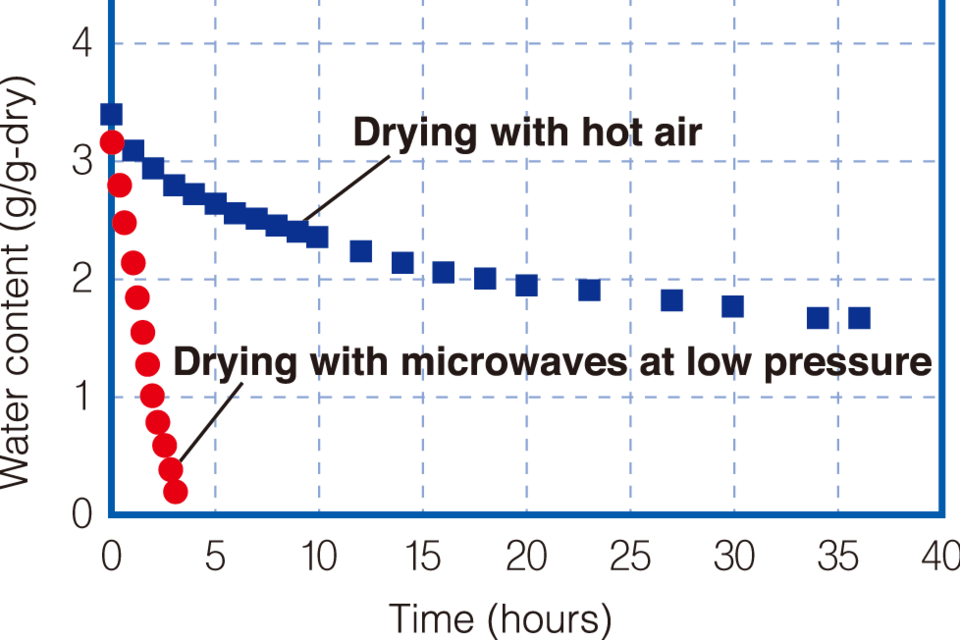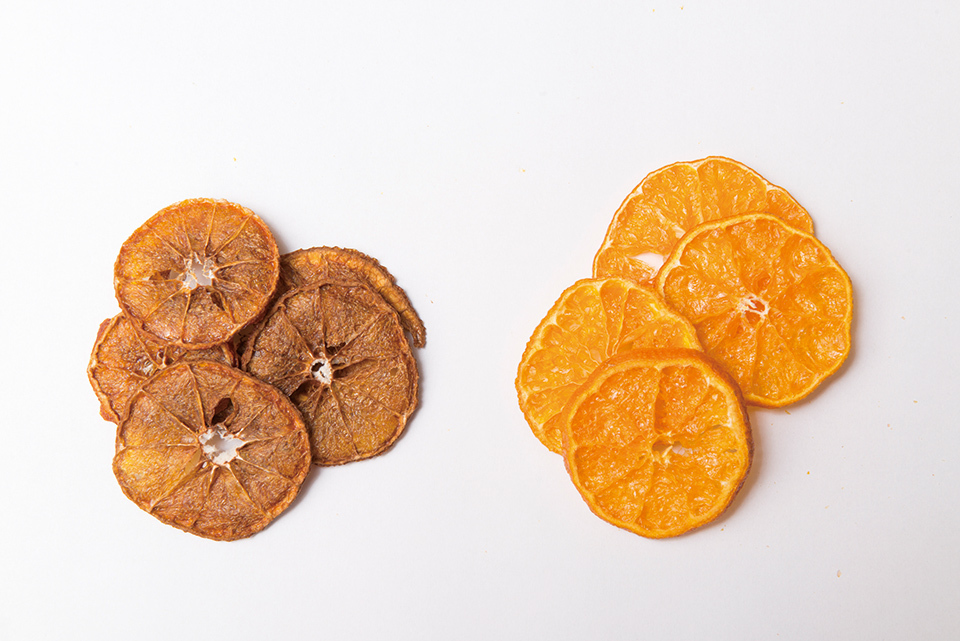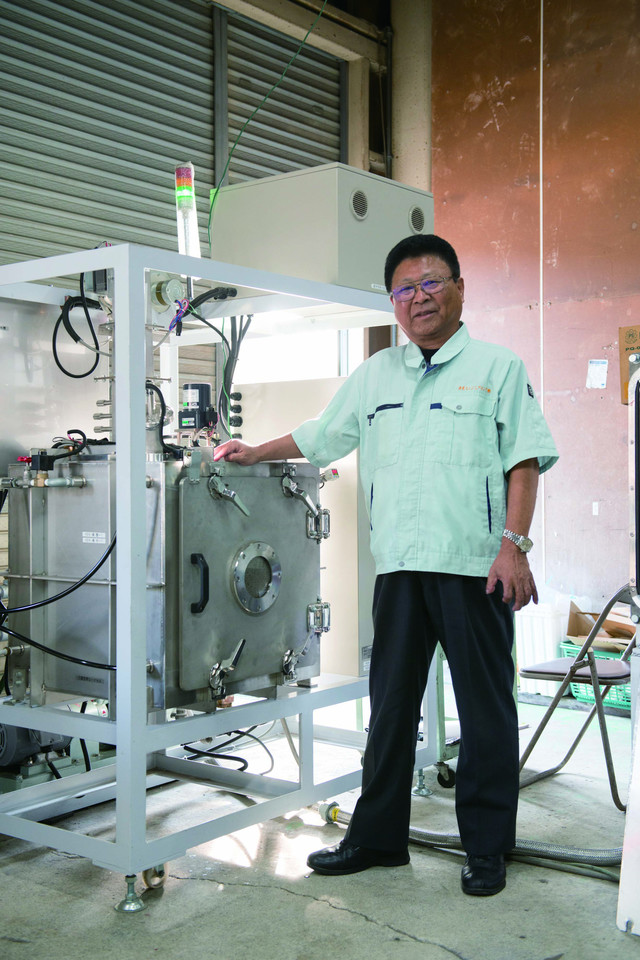Dried fruits have traditionally been prepared by various methods, such as sun drying, preserving in sugar, and frying in oil. Foods can also be dried with dehydrators, which generally use hot air. Another option is freeze-drying. But a new technology developed in Japan has made it possible to dry fruits and vegetables while keeping them close to their original color, shape, and flavor. This is microwave-vacuum drying, a method that uses neither hot air nor freezing.
The hot air in regular food dehydrators dries foods from the outside. This causes the surface to harden, making it difficult for the water inside to get out and lengthening the drying process. In contrast, the microwave-vacuum dehydrator uses microwaves that reach inside the food, causing the water in it to evaporate. The water vapor is carried away in air currents. This technique results in uniform drying and allows the process to be completed more quickly. Because the air pressure is kept very low, the boiling point of water is less than 40°C, the temperature at which cell tissues begin to be affected by heat. This means that foods can be dried without damage.
How microwave-vacuum drying works
Microwaves reach inside the food, causing the water in it to evaporate. The vacuum pump draws out the air, lowering the pressure inside the dehydrator. Because the boiling point falls at lower pressure, water evaporates at a temperature below what would cause heat damage to cells. Air currents swiftly carry away the water vapor.
The company that produced the world’s first commercial microwave-vacuum dehydrator is Seiko Engineering, a firm with 12 employees in Fujieda, Shizuoka Prefecture, about 200 kilometers (125 miles) southwest of Tokyo. President Kuniyasu Okamura, who founded the company in 1987, previously worked as an engineer designing equipment for drying locally grown tea leaves. Seiko Engineering initially designed and manufactured baking furnaces for automobile engine parts. Using its heat-control and drying know-how from these operations, the company undertook development of food dehydrators. In 2006, it started working on a microwave dehydrator to shorten the time required and lower the operating cost for the drying process.
Okamura, who is also involved in sales of local farm products and seafood, was looking for technology to dry foods while preserving their original shape and components. He explains, “I was searching for a method that would both keep foods delicious and deliver the ultimate in energy saving. And I found a method of microwave-vacuum drying that had been developed at Kyushu Institute of Technology.” In 2012, his company produced a commercial food dehydrator using this method. The key to this success, he says, was the creation of a door that maintains a vacuum inside the device and prevents microwave leakage.
The microwave-vacuum dehydrators made by Seiko Engineering can ordinarily dry fruits in just two to four hours, compared with regular dehydrators, which generally take days. These devices can take as little as 1/25 of the time and electricity required by hot-air food dehydrators to complete the process. They also produce better-quality dried foods.
The microwave-vacuum dehydrator was commercialized just three years ago, but it has already attracted attention from overseas as well as within Japan. Seiko Engineering is now building a large-scale model in response to a request from a company in Singapore. “We’re always developing some new technology,” says Okamura. The company is working on further improvements to the device, such as functions to prevent excessive drying and to automatically exchange food trays.
Drying methods compared
Note: Comparison is for production of dried scallop meat.
Orange slices dried in hot air (left) and in a microwave-vacuum dehydrator (right). The former have a burnt taste, but the latter preserve the original flavor and aroma.


































































































































